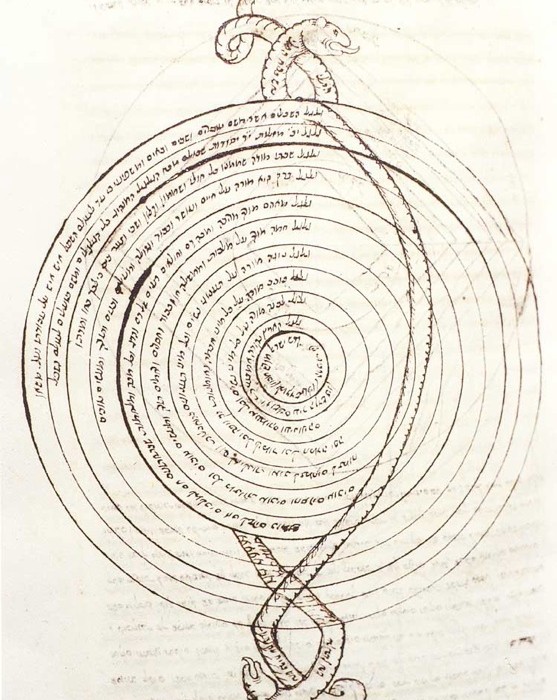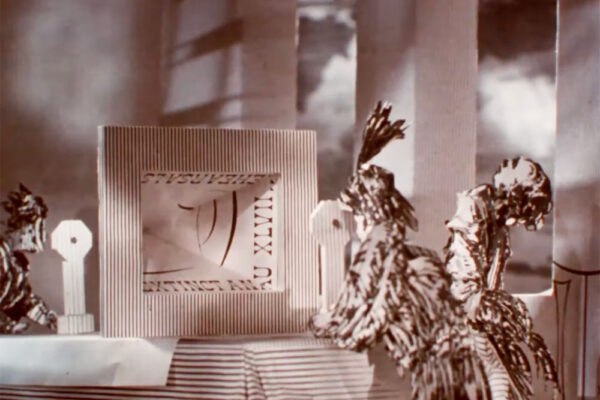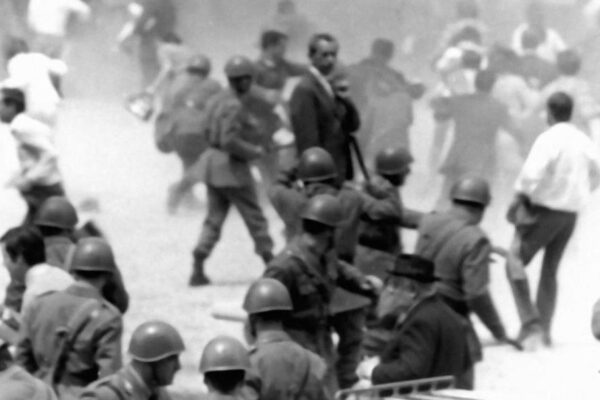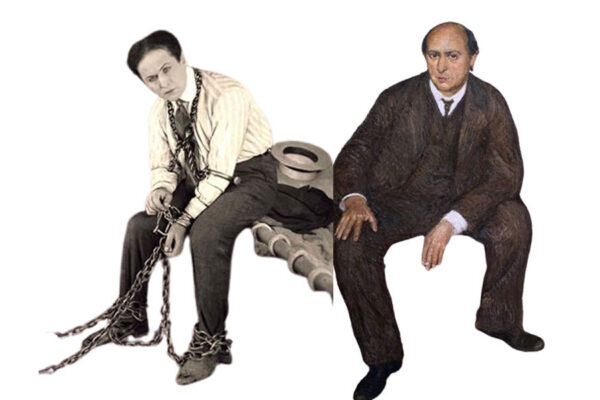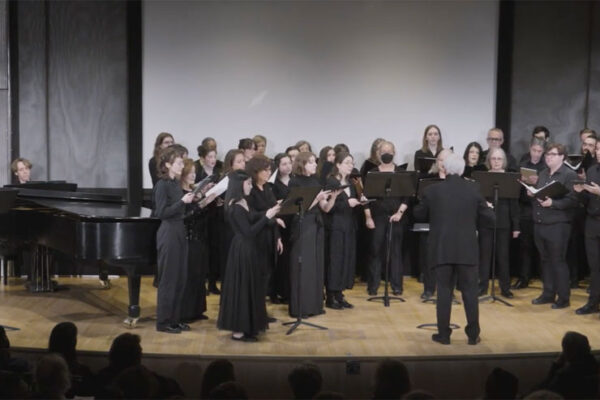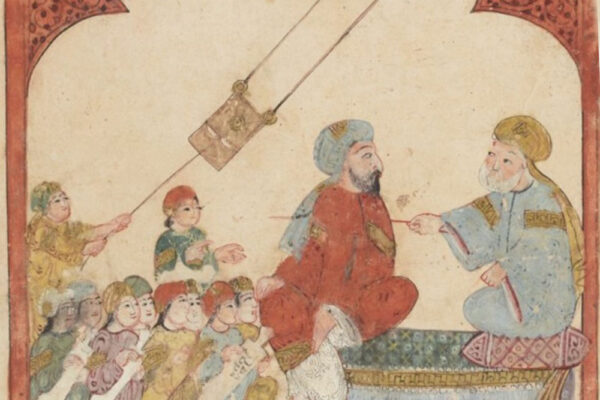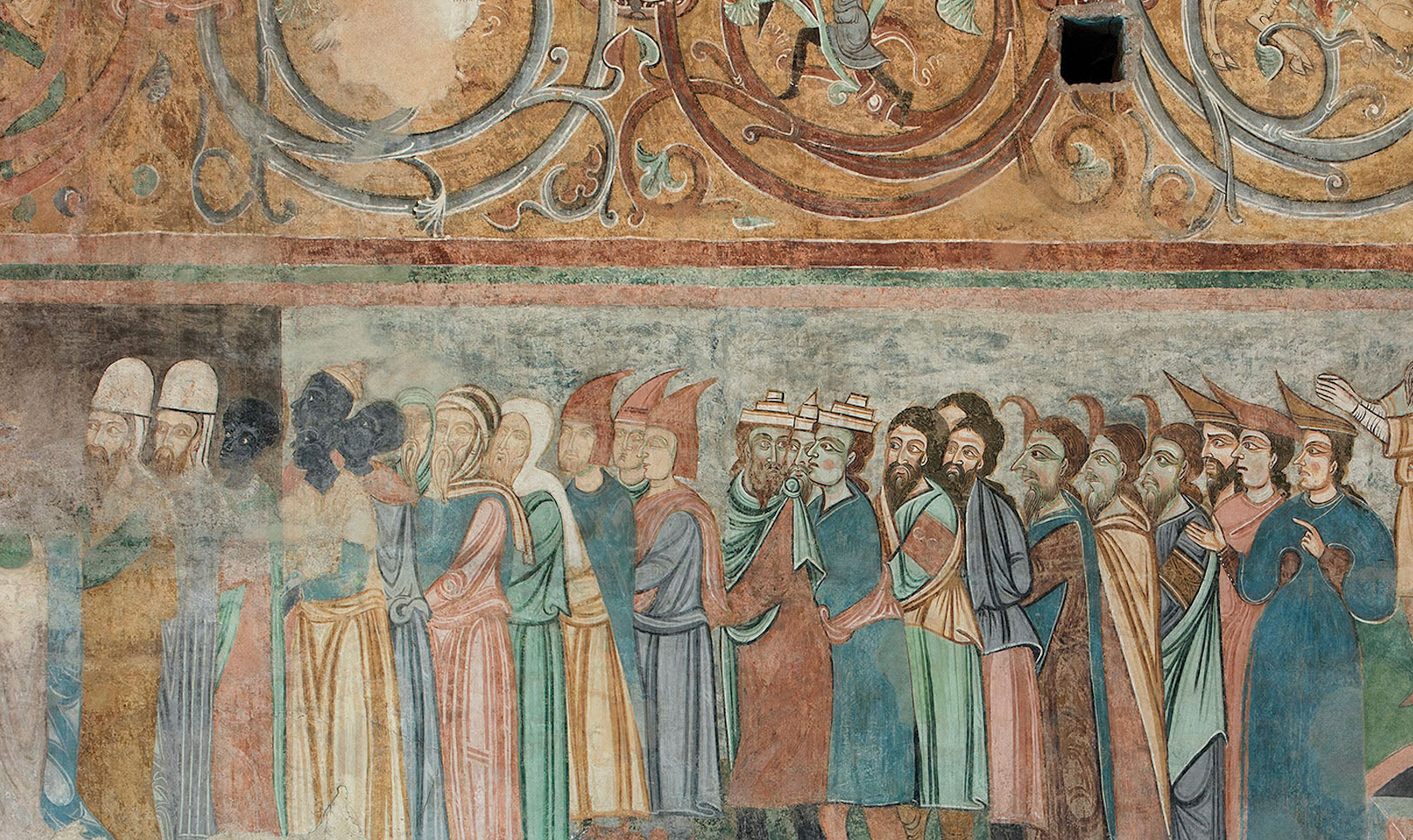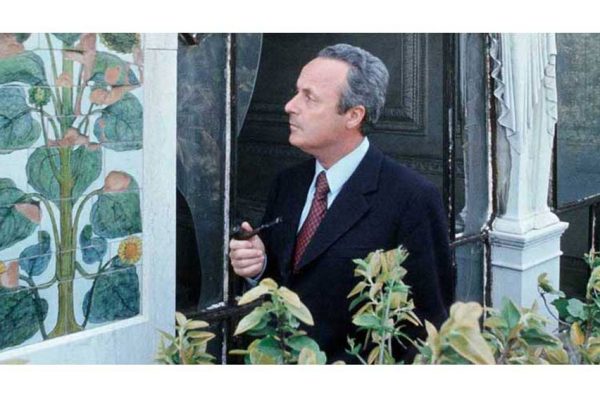Hearing Jewish, Writing Italian Reconsidering the Written Sources of Italian Jewish Music
The earliest historical sources that document the development of Jewish musical culture in Italy are a series of notated manuscript and printed documents, which date from the era of the ghettos and until the Emancipation in the mid-19th century. These written materials are not only important in the reconstruction of synagogue musical history. They are also equally important in highlighting the evolution of Jewish-Christian relations in Italy centering on synagogue life, and thus constitute invaluable primary materials informing the study of Italian and Jewish cultural history. These sources are all well known to Jewish music scholars, but not equally known among historians. Their interpretation could benefit from a broader view and an expanded methodology that those provided by traditional scholarship.
Early Italian Jewish musical sources differ greatly among themselves, and were produced by very different cultural agents. Musical notations were created by synagogue cantors, like Avraham Segre of Casale Monferrato, in Piedmont (before 1670); by Christian scholars, like Giulio Bartolocci in Rome (1693); and by Jewish and non-Jewish musicians, the likes of Salamone Rossi (1622-23) of Mantua, and Benedetto Marcello (1724-27) of Venice. They also range in scope, as they served a host of diverse purposes: they documented cantorial practices in order to pass them on to a new generation of synagogue musicians; they substantiated research about synagogue liturgy as a way to better document the roots of Christianity; they created a new body of polyphonic music based on Hebrew texts; and the facilitated the regenerating of the “ancient” passage of musical culture between Jews and Christians in modern times.
Finally, these sources also range in content, as they include both manuscripts and printed music, in which the relationship between text and musical notes varies greatly, and represents sounds (the sounds of both music and lyrics) in different ways. And yet, all these sources stem from one basic experience: the encounter of Jewish and Christian musical cultures, and therefore of Jewish and Christian musicians, around the music of the synagogue, and thus around a shared experience of synagogue life. In this respect, these sources should be compared with others that offer a wider picture of the role that music had in Italian synagogue life, including the scores, librettos and historical descriptions of the kabalistic ceremonies for hosha’na rabbah in Venice (before 1682) and Casale Monferrato (1732, 1733 and 1735) and the inauguration of the Synagogue of Siena (1786).
Past scholarship on Italian Jewish music, however, has more or less systematically avoided considering these musical testimonies as a place of Jewish-Christian interaction, and has instead focused on creating a consistently “Jewish” historical narrative that surrounds their production.
For the sake of chronological consistency, I suggest to exclude from this pool of sources a very important document in the history of Jewish music — one that could be otherwise used as a “manifesto” to prove the cross-pollination between Jewish and Christian musical cultures in the documentation of Jewish music. I am referring to the musical notations produced in the 12th century by Johannes, or Obadiyah “The Norman Proselite,” a native of Oppido Lucano. These notations in diastematic beneventine neumes (Fragment Cambridge TS. K 5/41 and Fragment Cincinnati ENA 4096b), were studied by Norman Golb, Israel Adler (and others), and transcribed by the latter. Albeit created by a Christian native of Italy who converted to Judaism, these sources do not seem to be linked to the musical culture of the Jews of Italy. As noted by Reinhardt Flender, they may instead be connected with the practice of Hebrew psalmody in North Africa and the Middle East.
Even with the exclusion of Obadiah’s manuscripts, we are looking at some of the earliest sources of Jewish musical culture produced in Italy, and we should therefore contextualize them within the musical cultures of Italian Jewry. As we know it through written and oral sources, Italian Jewish music comprises a vast musical corpus, consisting of numerous distinct liturgical and paraliturgical traditions of various origins, continuously in contact with a broad range of influxes and in constant evolution over a long period of time, developed in the many Jewish communities of the Italian peninsula and the areas in which Jews originating from the peninsula came to live.
This complex and fascinating musical world is one of the widest uncharted areas of Jewish music. The study of Jewish music operates in a constant dialectic between oral and written sources, and is based on the understanding that oral sources point to historical information that cannot be retrieved by relying upon written sources alone: information that often sheds light on the cultural history of the Jews beyond the boundaries of “normative” Judaism. In other words, the orally transmitted musical repertoires of the present can offer an unprecedented view on Jewish life of the past beyond “music,” including daily life, intellectual and spiritual dimensions, economic and societal assets, family and gender roles, and Jewish-Christian relations.
The study of Italian Jewish musical sources, past and present, written and oral, can best be conducted in conjunction with the reconstruction of synagogue life. This study, which combines musicology, history and ethnography, prompts us to define Italian Jewish liturgical music as a hybrid of Ashkenazi, Italian and Sephardic traditions, in constant cross-pollination with one another and in continuous interaction with the musical culture of the “other,” namely of the Italian Christian majority.
The nature of this interaction needs to be assessed in the specificity of each local and chronological context. But it first needs, to put it bluntly, to be acknowledged. In order for the musical sources mentioned thus far to be produced, the interaction had to occur not only between Jewish and Christian musical “cultures,” but also between Jewish and Christian “musicians.” This very basic fact has not been considered by the scholars of Italian Jewish music, with the exception of Edwin Seroussi’s study of Benedetto Marcello’s Estro poetico-armonico (Venice, 1724-1727).
Israel Adler, the scholar to whom we owe the systematization and often the discovery of almost all the sources of Italian Jewish music, in his seminal work La pratique musicale savante dans quelques communautés juives aux XVIIe et XVIIIe siècles, flatly denies the importance of the presence of non-Jewish musicians, as such, in the Jewish setting:
« Dans ces conditions on ne s’étonnera guère de voir certaines communautés s’assurer la collaboration d’un compositeur non-juif pour la célébration de leurs cérémonies religieuses. En ce qui concerne la valeur de ces documents pour l’histoire de la musique juive, à partir du moment ou leur contenu musical n’est pas puisé aux sources du chant traditionnel juif, il importe peu que leur auteur soit juif ou non-juif. Ce qui importe, c’est le caractère intimement juif des cérémonies auxquelles ces œuvres étaient destinées. » (Adler 1966 : 39-40).
Instead, Adler focused on emphasizing the role that segregation played in eliciting an artistic (cultural) response from Jewish intellectuals/musicians:
« Ce n’est pas peut-être pas un hasard si c’est surtout à partir de cette époque que l’activité musicale dans un cadre juif nous est connue : empêché de poursuivre une carrière musicale officielle à l’extérieur, le musicien juif devra désormais s’exprimer à l’intérieur du ghetto ». (Adler, PM 1966 : 46).
Don Harrán, whose portentous scholarly career has been devoted to the study of the life and works of Salamone Rossi (ca. 1570 – ca. 1630), has focused greatly on Rossi’s “status” as a “Jewish” musician in a gentile world. In Harran’s historical narrative (if not in the musical analysis), Rossi appears less as a man of his time, whose professional and personal contacts were both outside and inside the ghetto, and whose published works (including his “Jewish” hashirim asher lishlomoh, Venice 1622-1623) were the result of a Jewish-Christian partnership, and more like a timeless figure, a “spiritual father” to the stateless Jewish composers of post-Emancipation Europe:
“No other Jewish musician of [Rossi’s] stature and accomplishments is known from ancient times to the early seventeenth century; he was described, in fact, as the first to have restored music to its splendor in the Ancient Temple and as having David the psalmist as his forebear. Nor can any later Jewish composer, of the same caliber, be found until the nineteenth and twentieth centuries. True, Mendelssohn and Mahler were Jewish-born, but by converting [to Christianity] they masked their origins. Other composers, who were, in fact, preoccupied with their Jewish heritage, better qualify as Rossi’s spiritual descendants, among them Ernest Bloch, Darius Milhaud, and Leonard Bernstein.” (Harrán, Salamone Rossi, 1999: 2).
Yet, the issue of how Jews acquired musical literacy — an ability that seems to characterize a handful of Jewish intellectuals and entertainers in Italy and Southern France since the 16th century — is only marginally asked by these scholars.
A possible answer to this question may come from considering the marginality that these early music literates occupied within their society. For the musical notation of the Psalms in Casale Monferrato (Ms. 479, Montefiore coll., Jew’s College, London) to be produced in the second half of the 17th century, several figures were needed: a cantor (Abraham Segre) who wished to transmit his knowledge to his pupil; a pupil (Ya‘aqov ha-levi Finzi, a student of Abraham b. David Provenzal and Shmuel Archivolti, defined in the ms. as shaliach tzibbur ashkenazi from Casale Monferrato) whose desire was to write down this knowledge; and a Jewish intellectual, rabbi and grammarian (Avraham Yosef Shlomoh b. Mordekhai Graziano, Pesaro 1620-Modena 1685), who inserted the pupil’s annotations into his own compilations of glosses and notes on grammatical subjects. The “marginality” of these characters, and their deep relationship with music, is epitomized by Graziano’s nom de plume.
Graziano signed himself, emblematically, and puzzingly, as ish ger anokhi baaretz. This Hebrew expression, which literally translates into “I am a foreign man in the land,” was possibly, through Graziano’s initials (the letter aleph for Avraham and for the word ish, or “man”; and the letter gimel for Graziano, and for the word ger, “foreigner” or “convert,”) a pun on the figure of David as the father of Jewish music — interlacing II Samuel, 1:13: ben ish ger ‘amaleqi anokhi and Psalms 119:19: ger anokhi baaretz. But the signature may also be interpreted as a “musical signature of estrangement” of sorts — not unlike the notes “fa-re-sol” in the signature of Abraham Farissol — and, at the same time, as the graphic marker of a marginality that blatantly suggests a closeness with the musical culture of the “other.”
A more pronounced interaction between Jewish and non-Jewish music practitioners is also suggested by the typographic setting of Rossi’s hashirim asher lishlomoh (Venice, Bragadina 1622-1623), perhaps the most famous and most performed Italian Jewish musical work. As a brief examination of its pages suggests, the Hebrew text of Rossi’s settings was paginated following the left-to-right direction of the musical notes. Of the two “languages” that appear in the work — Hebrew, in Hebrew script, and music, in musical notation — the one that dominates the typographic architecture of the pages is by far the “Christian” one, the language of music. The creation of this publication clearly required a combination of different kinds expertise, exercised under the roof of the Bragadina printing press, and a careful collaboration between author (Rossi), editor (presumably rabbi Leone Modena), and the music printers. As far as I am aware, the question of who, at the Bragadina, may have had the necessary expertise to print music has not yet been asked. A plausible answer would most likely point to Christian printers active in Venice at the time.
The interaction between Jews and Christians in the production of Jewish musical sources becomes clearer when the sources are the direct product of Christian authors, as is the case of both Bartolocci’s and Marcello’s transcriptions. These Christian intellectuals wrote down what they heard the Jews sing. In order to do so, they must either have gone into the ghetto (this is most likely the case of Marcello, see Seroussi), or at least have interviewed them at the Collegium Neophytorum (where Bartolocci taught Hebrew literature since 1651).
Bartolocci wrote:
Hos Accentus ab Hebræis Hispanis, & Italis usitatos, proprijs auribus ab ispis canere audivi, qui à quodam Artis Musicæ perito, quanta fieri potuit proportione, nostris notis Ut, re mi, fa, &tc. adaptati, sunt suprascripti tenoris; ut autem eorum forma, vel figura, unico dignoscatur intuitu, placet hic eos omnes referre, ad quorum explicationem, sufficiunt ea, quæ de Accentibus Musicis, quibus Iudæi Germani utuntur, dicta sunt. Quòd si aliquis ex his Accentibus Hispanis, & Italis non fuerit suprà explicatus, facilè Lexicorum consilio quisque intelligere poterit. (Giulio Bartolocci, “De Hebræorum MOY∑IKH Musica Brevis Dissertatio”, Qiriat sefer… Bibliotheca Magna Rabbinica, vol. IV, edited by Carlo Imbonati, Rome 1693: 441)
The practice of musical transcription requires excellent musical skills (Bartolocci’s disclaimer is that he did not have much of those), and also time: the time for the source to repeat, over and over again, the melody sung. It is not difficult to imagine how this may have happened then, without the assistance of recording devices (nowadays, software solutions allow to easily repeat, and slow down, any digital recording): the source (presumably a Jewish man, versed in synagogue song and/or in Torah reading) sang a melody, and the transcriber (presumably a Christian man, versed in music theory) jotted down an initial melodic line, and then asked his source to repeat it as many times as it was needed to ensure the accuracy of his transcription. In the case of Bartolocci (and of the Christian humanists who preceded and followed him, but who do not mention the act of having “heard” Jews sing as the source of their transcription), this was done for the twenty-eight melodic formulas that represent the te’amim (cantillation accents) as sung by Italian Jews (presumably of Roman tradition) in the reading of the parashah and the haftarah (Bartolocci: 440-441). In the case of Benedetto Marcello, instead, this was done for the eleven melodies he transcribed and published in his collection, Estro Poetico-Armonico, by “interviewing” two cantors, each representing the “German” and the “Spanish” traditions of the Venetian ghetto.
Typographically, the publication of Marcello’s melodies gave way to a different solution in print than Rossi’s shirim, as both the Hebrew and the music layout proceed here from left to right. The very act of musical transcription of a Jewish oral source implies proximity: physical, professional and intellectual. We are only left to speculate about how this proximity may have been acted out in the 17th and 18th centuries: how traditional culture bearers were identified, how they were approached, how the “fieldwork” was conducted and for what period of time it lasted. Edwin Seroussi (Seroussi, In Search of Jewish Musical Antiquity, JQR 2002), echoing a suggestion made by Pier Cesare Ioly-Zorattini, is the only scholar who actively described Marcello as a “proto-ethnomusicologist,” successfully drawing the same picture I attempted to paint earlier, in which the knowledge of the details of fieldwork are brought into the reconstruction of historical events:
“In order to make his transcriptions, which attained a remarkable degree of fidelity […] Marcello needed much more than a glimpse of the sounds of the synagogue through the windows or adjacent houses […]. He, or at least a (Jewish?) collaborator had to sit down with at least two synagogue cantors and to listen to repeated performances of each melody in order to write them down. This was a true situation of ethnomusicological fieldwork.” (Seroussi 2002: 170).
While Seroussi’s observations and mine match in terms of reconstructing the history of fieldwork — they are indeed based on first-hand experience drawn from our own research! — I would like to carry these examples of Jewish-Christian proximity a bit further in the appreciation of the Italian context. The musical production concerned the transcription of melodies from the oral tradition through fieldwork and the adaptation of Hebrew texts to music in manuscripts and print editions, but it also (and, perhaps principally) touched the performance and reception of the music itself inside the synagogue by Jews and Christians together. In other words, the final step in considering these interaction concerns by whom and for whom this “Jewish” music was presented. If we begin to factor the presence of Christian musicians and listeners among the performers and the public in the synagogues of Italy at this time, our perception of the Italian Jewish soundscape, and thus the historical narrative that surrounds it, may change irremediably.
A multi-faceted consideration of musical sources (creation, publication, performance, and reception) as the product of a Jewish-Christian interaction becomes particularly poignant once we consider a host of Kabbalah-inspired ceremonies, the music of which has been released numerous times in commercial recordings, and recently even performed again in the original sites: the Cantata hebraica in dialogo, by the Christian composer Carlo Grossi (Venice, before 1682); the anonymous cantatas-quasi-oratorios for hosha’na rabbah in Casale Monferrato (1732, 1733, 1735), most likely composed by a Jewish-Christian team; the music for the inauguration of the synagogue of Siena in 1786, which was the work of a Christian professional, Francesco Drei, and a Jewish amateur, Volunio (or Zevulun) Gallichi. The consideration of these ceremonies as occasions for Jewish-Christian interaction remains to be explored, and is likely to change both our impression of the music itself, as well as the weight of musical sources in our understanding of Italian Jewish cultural history.


